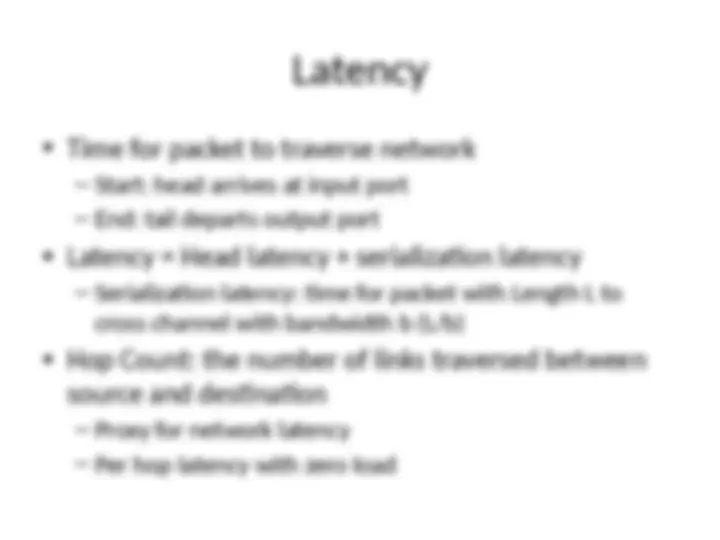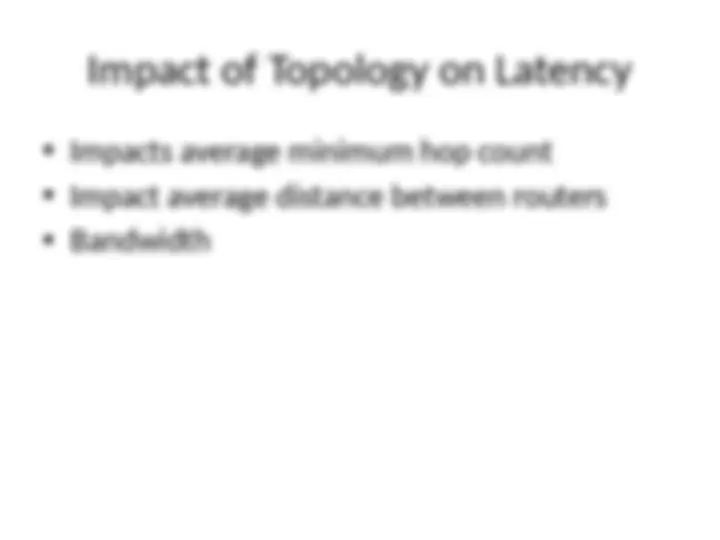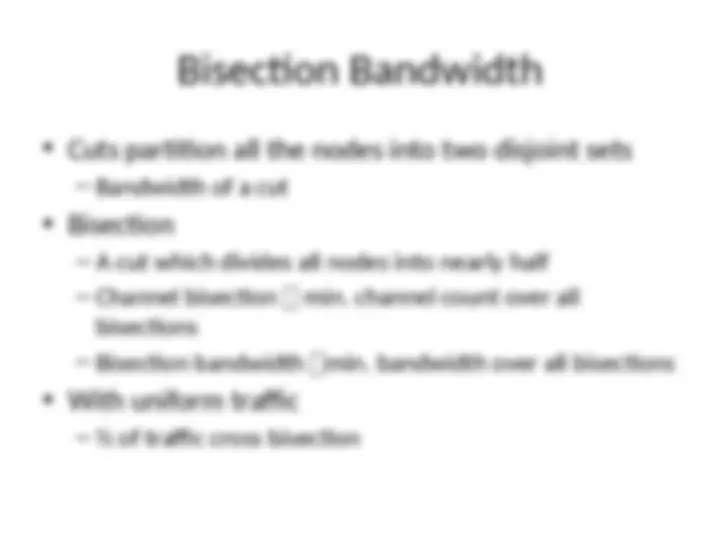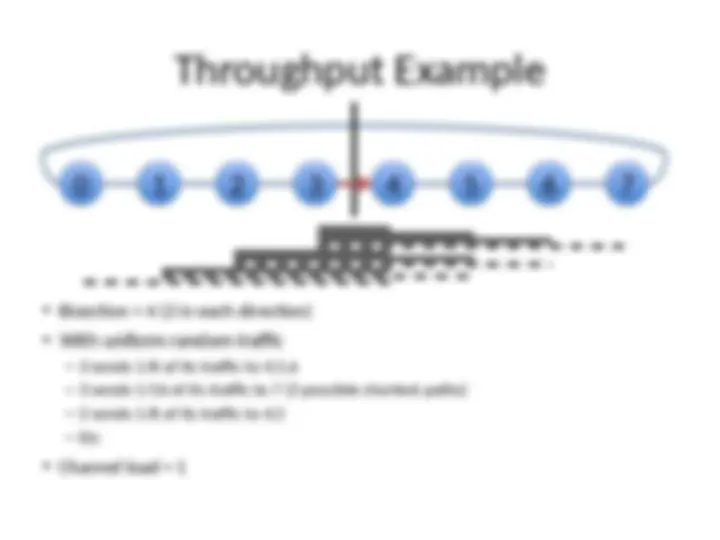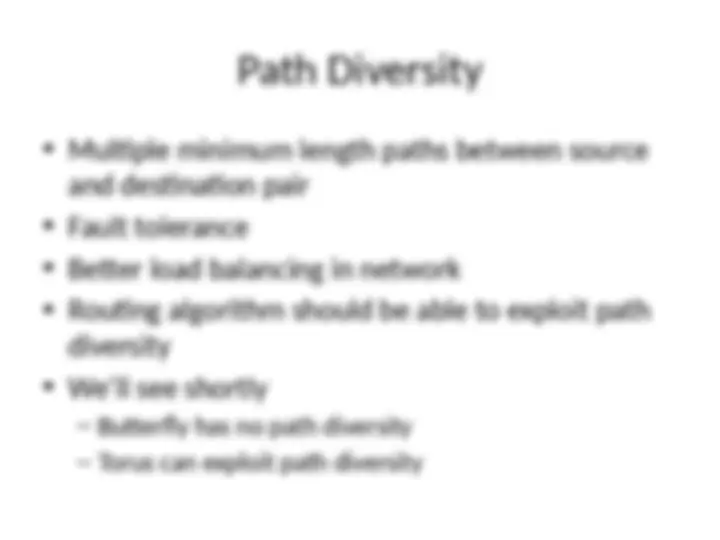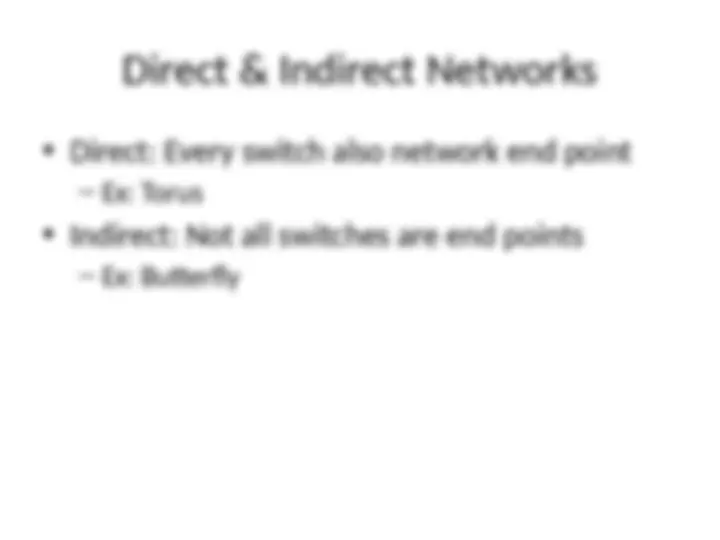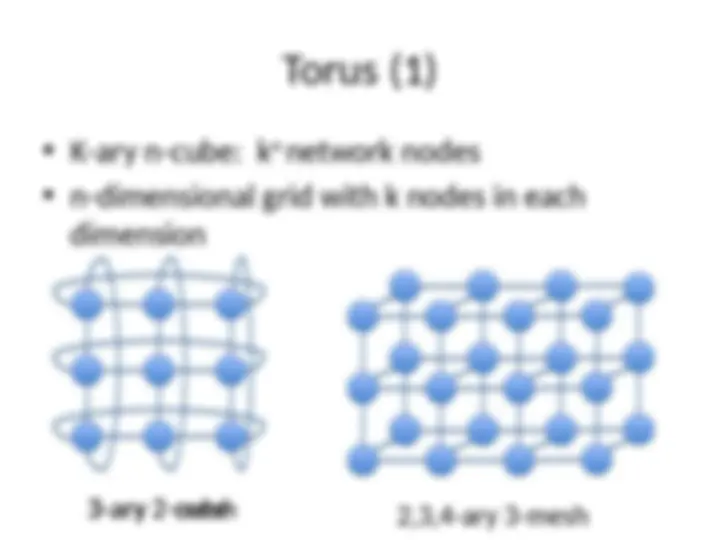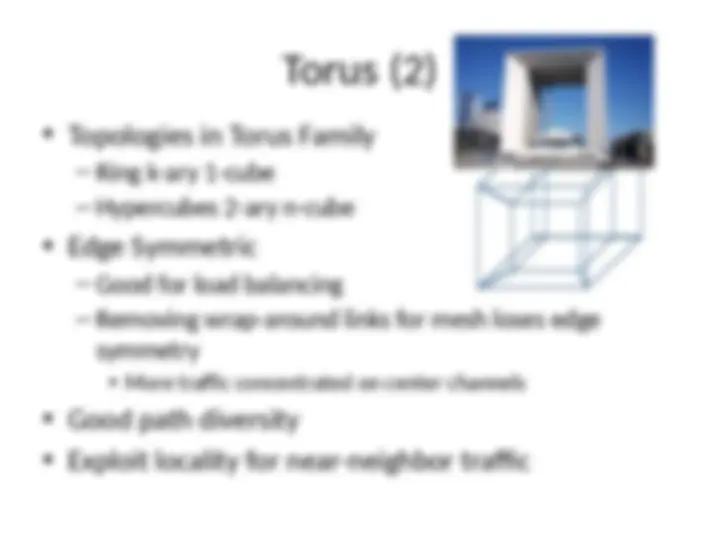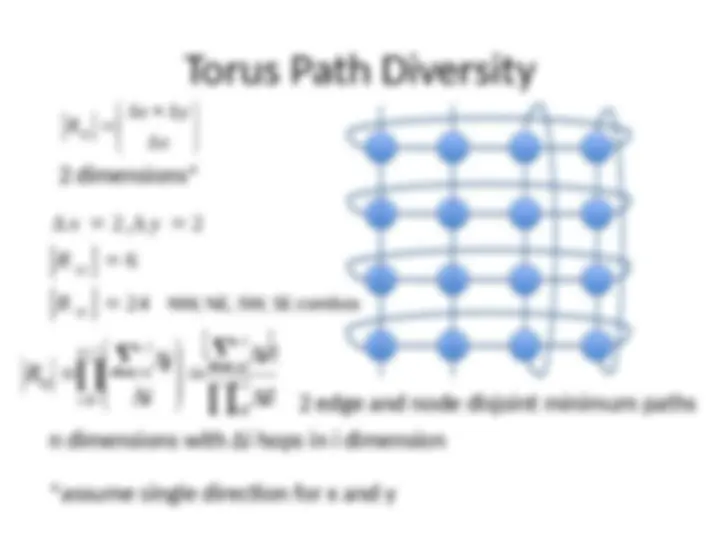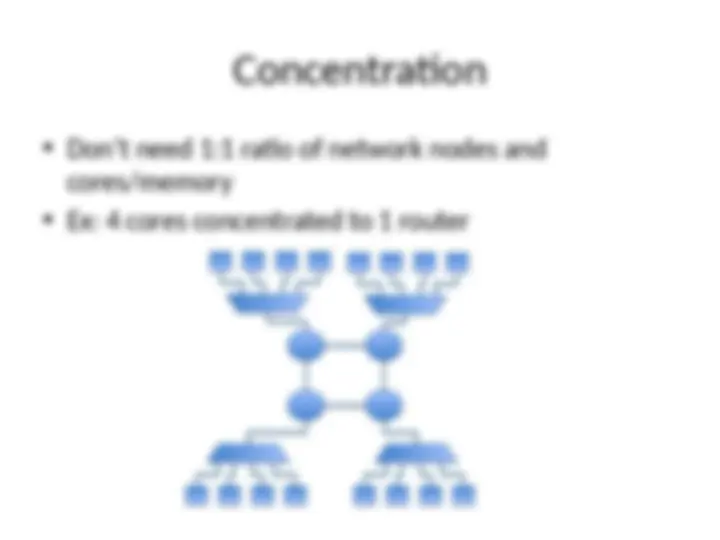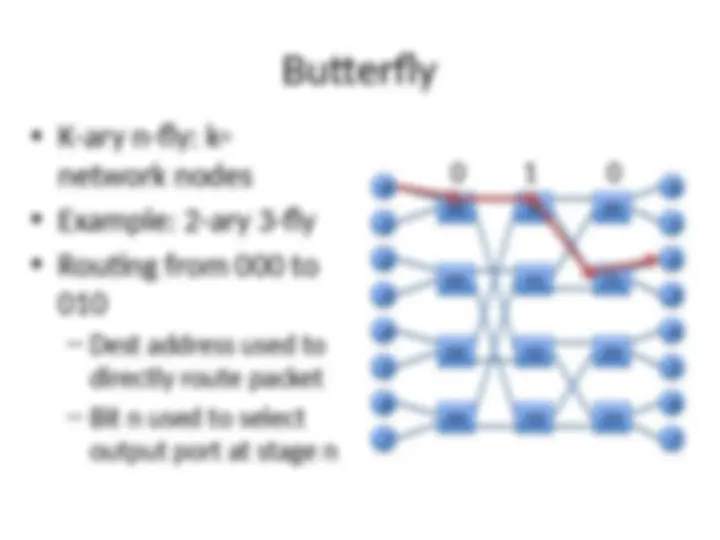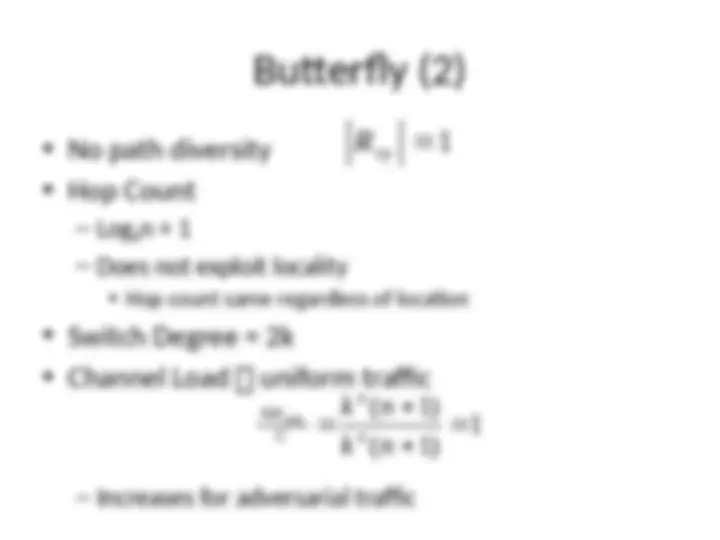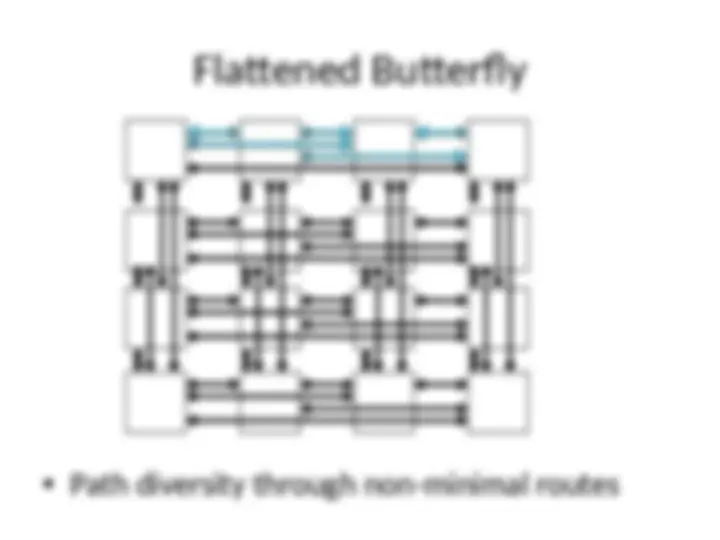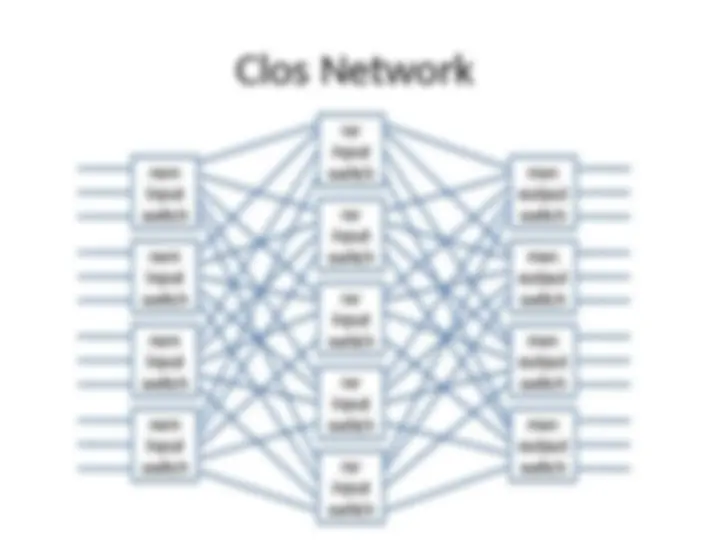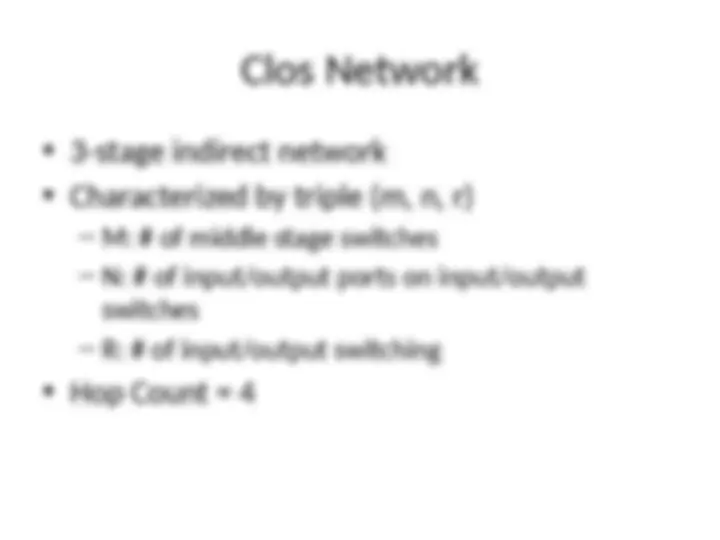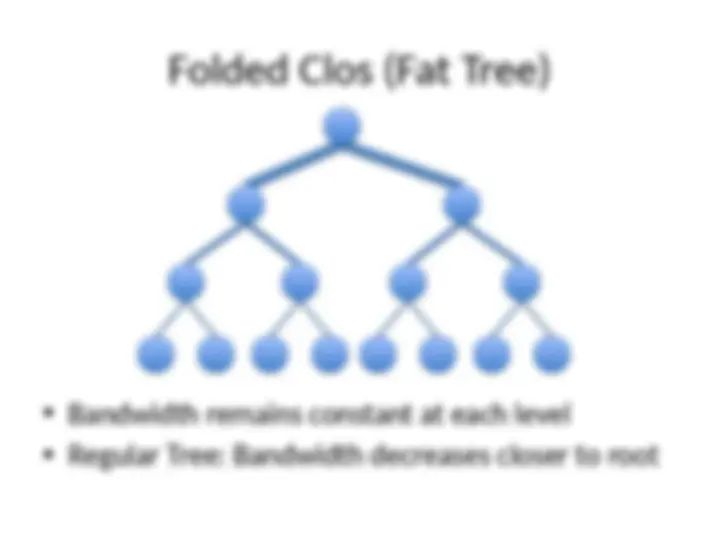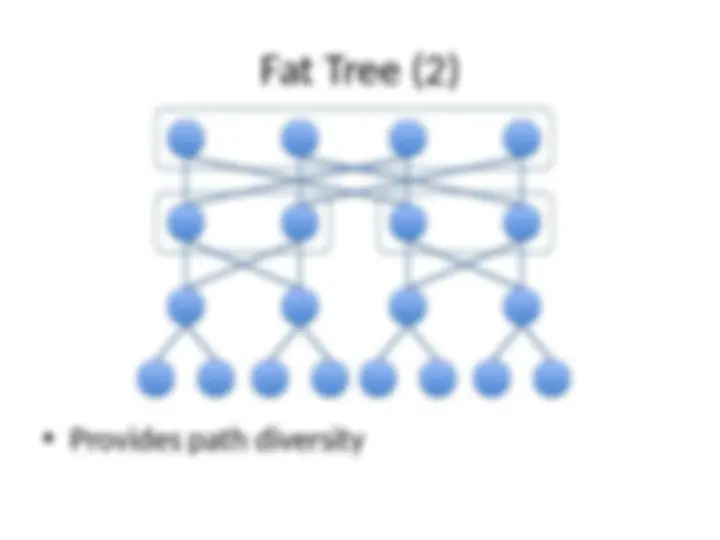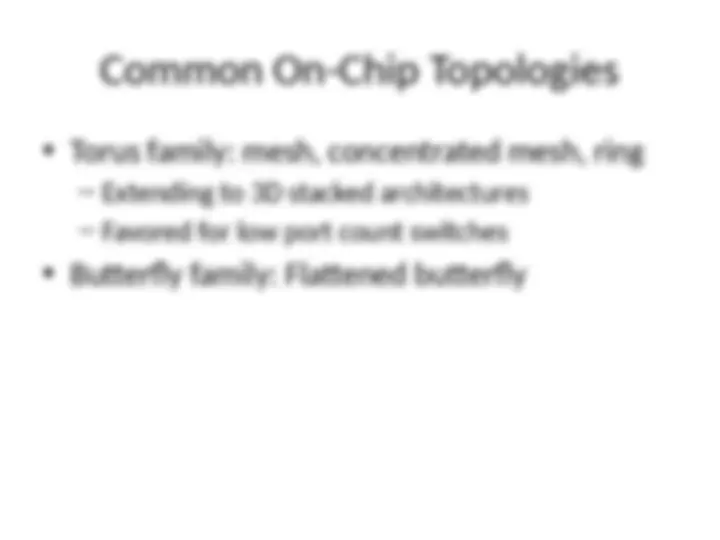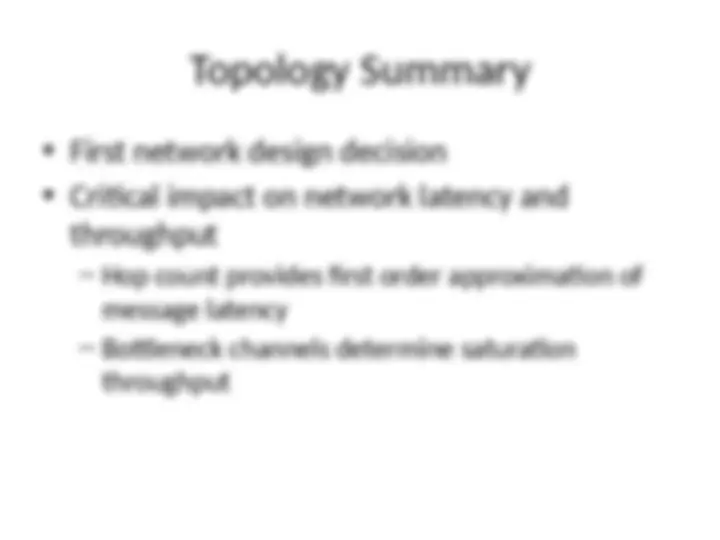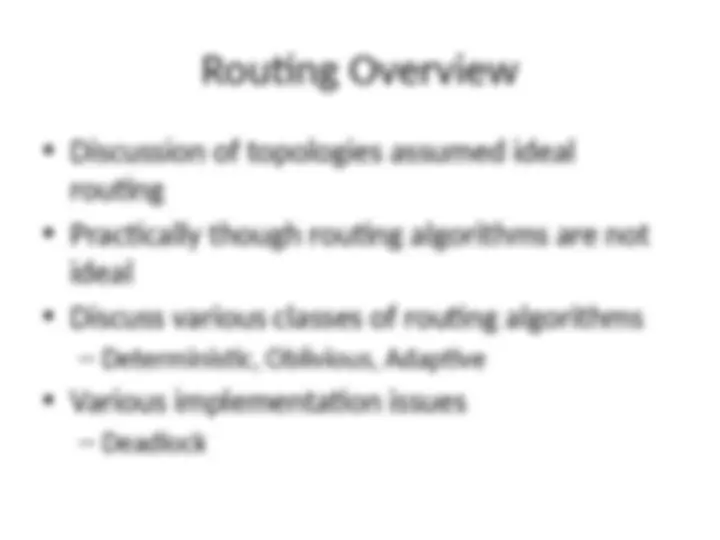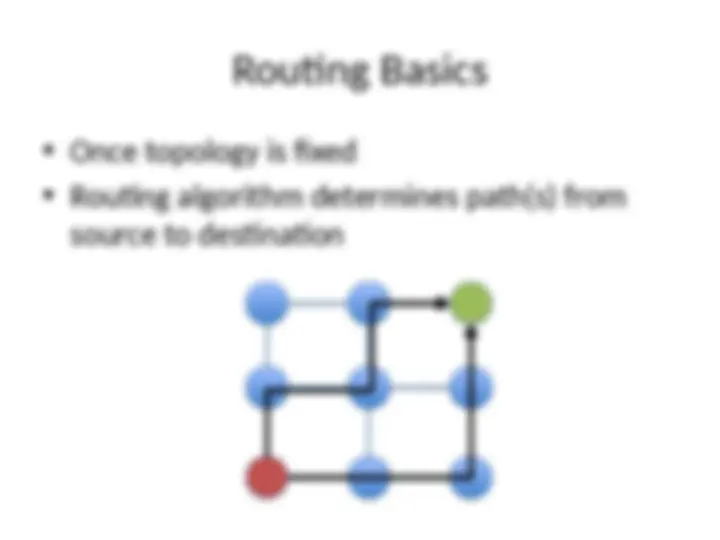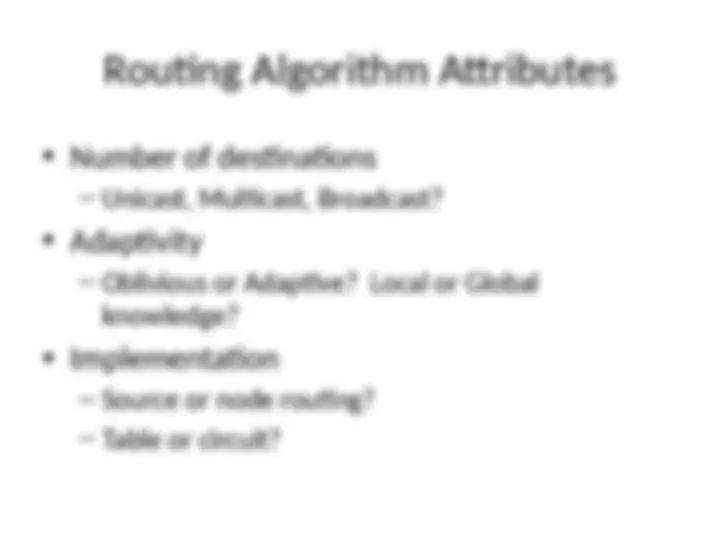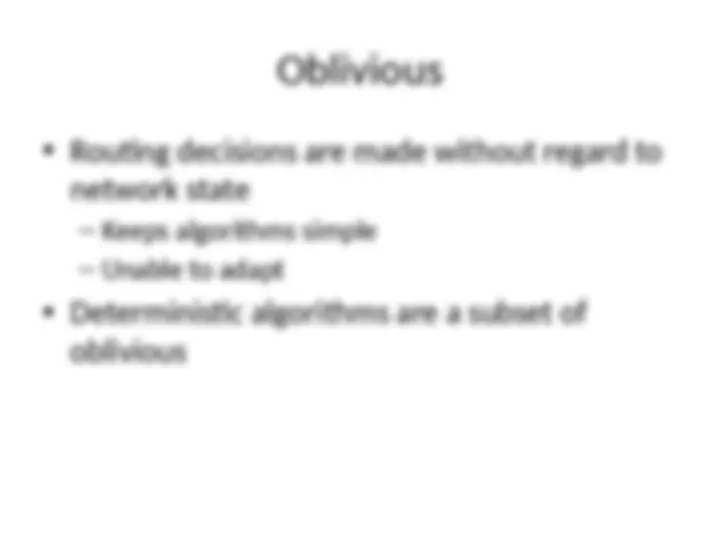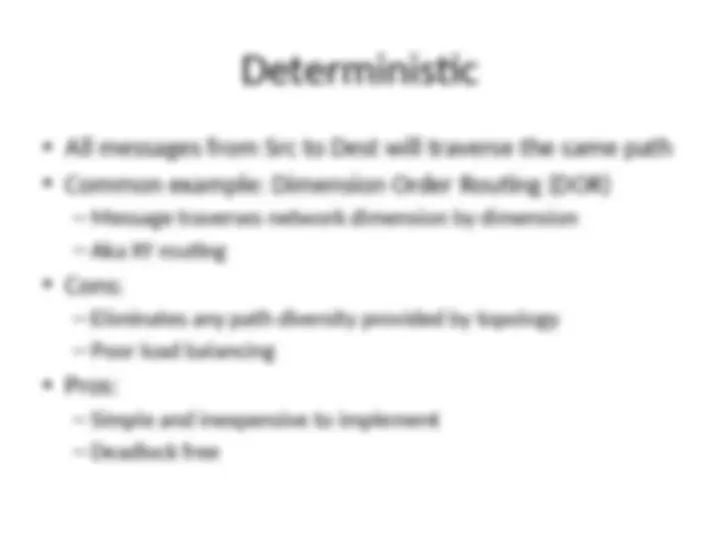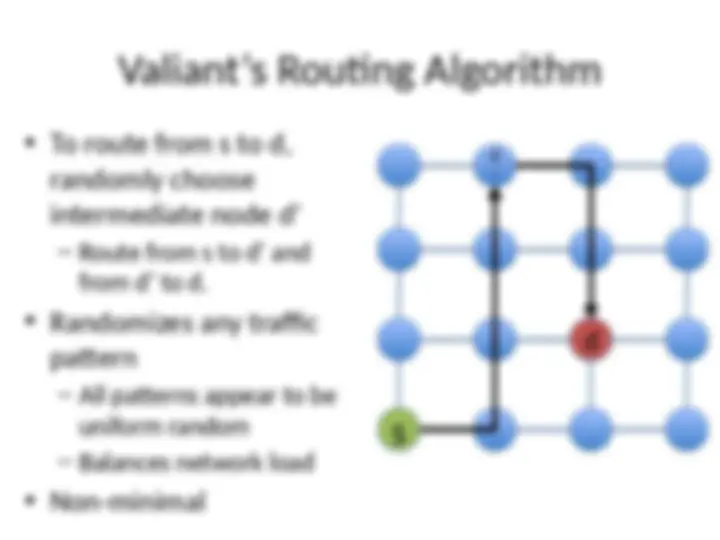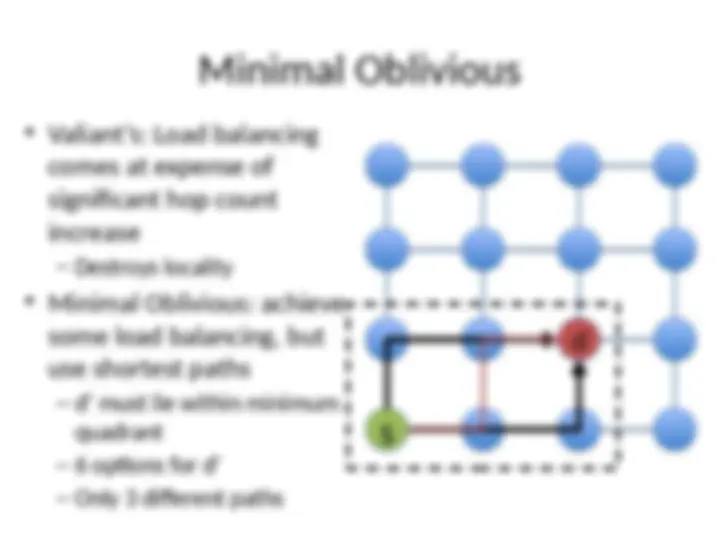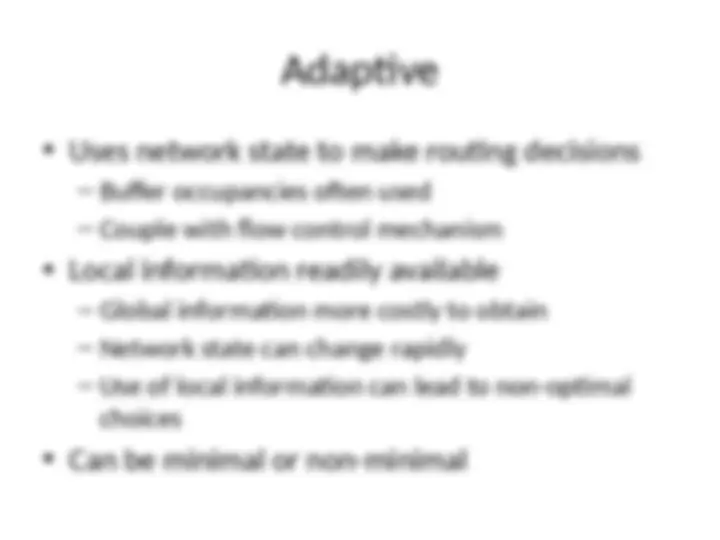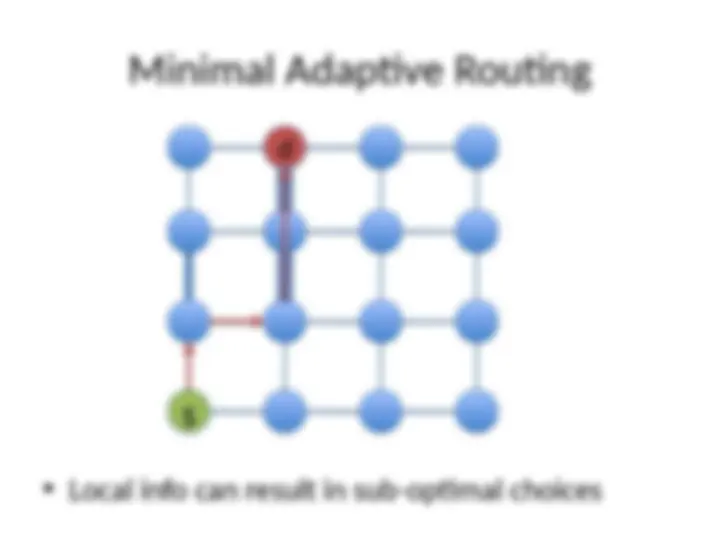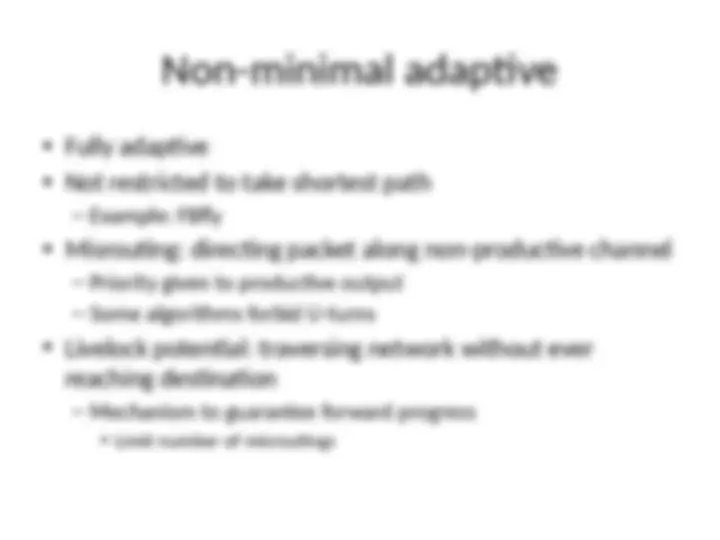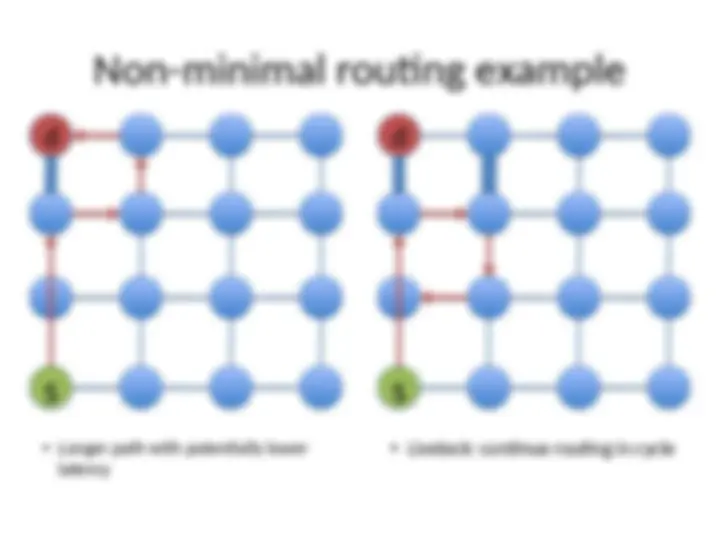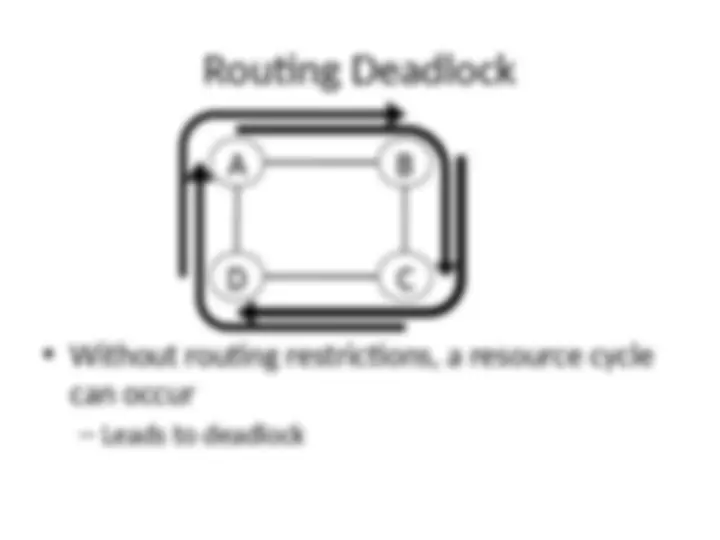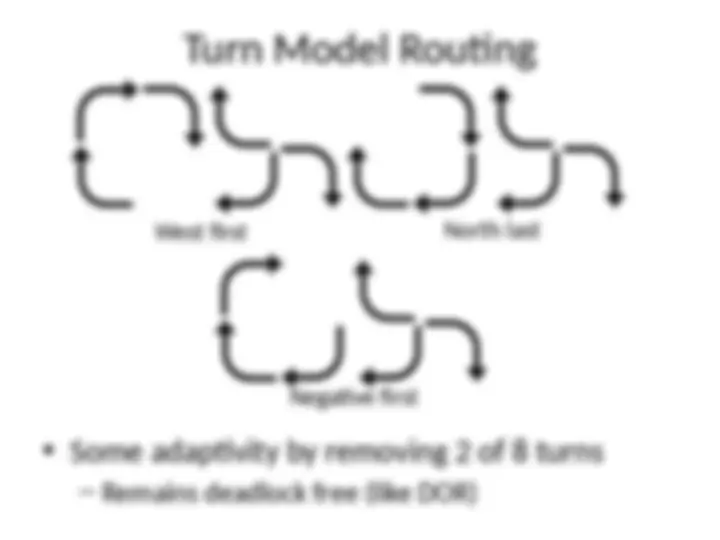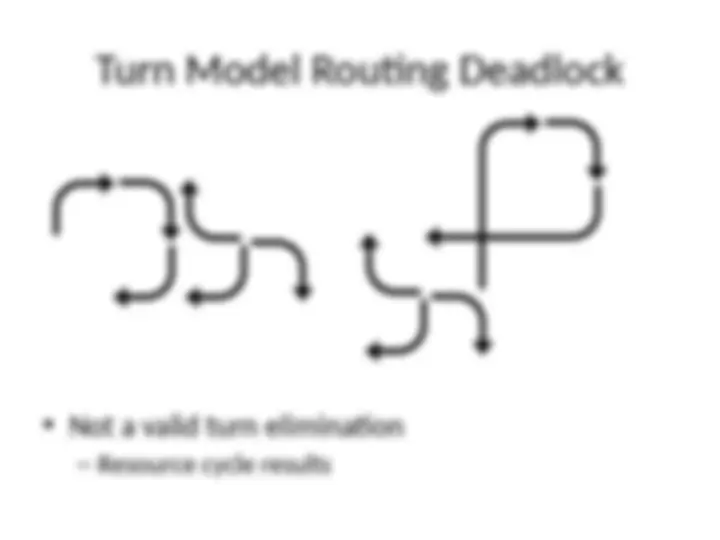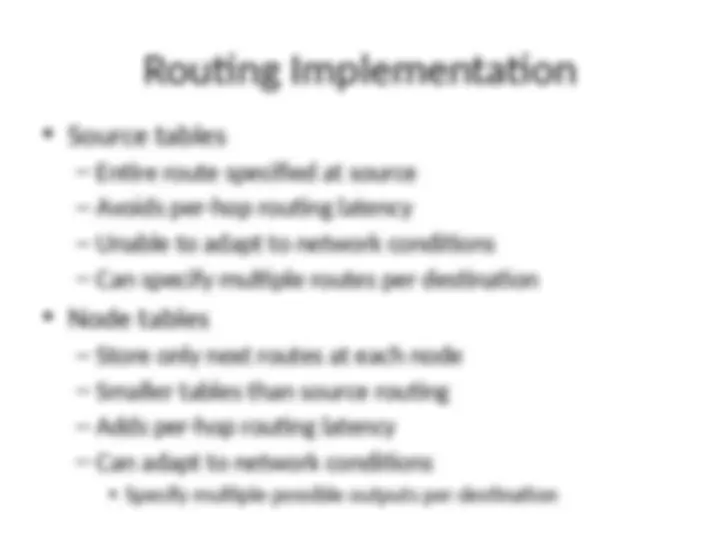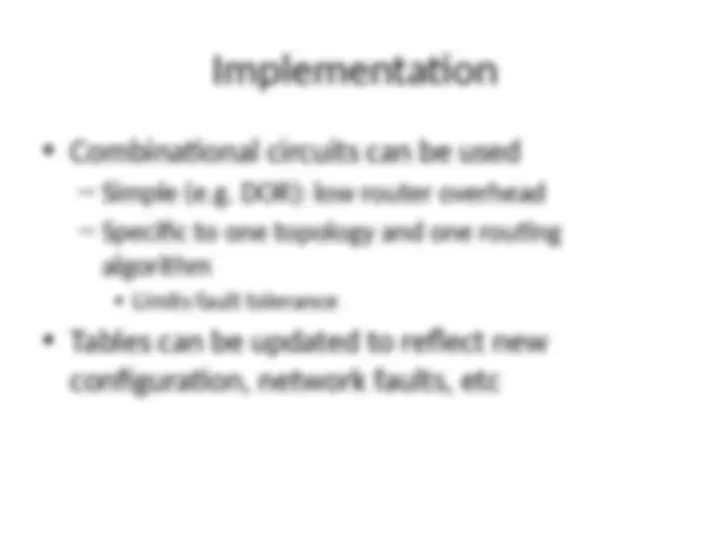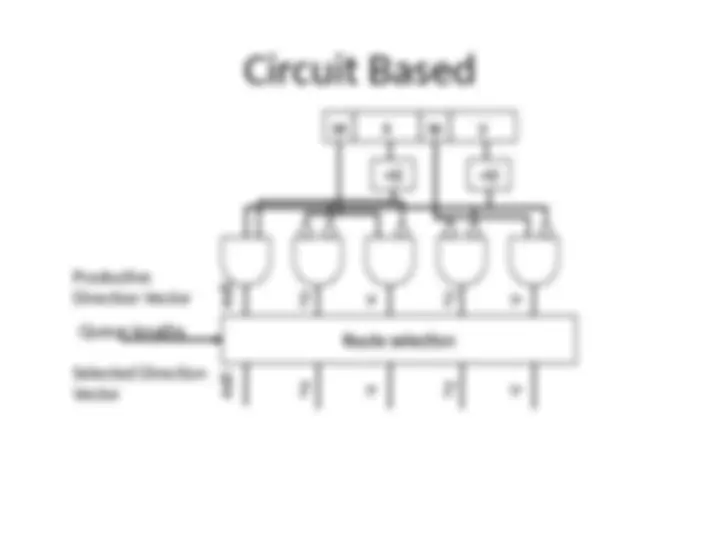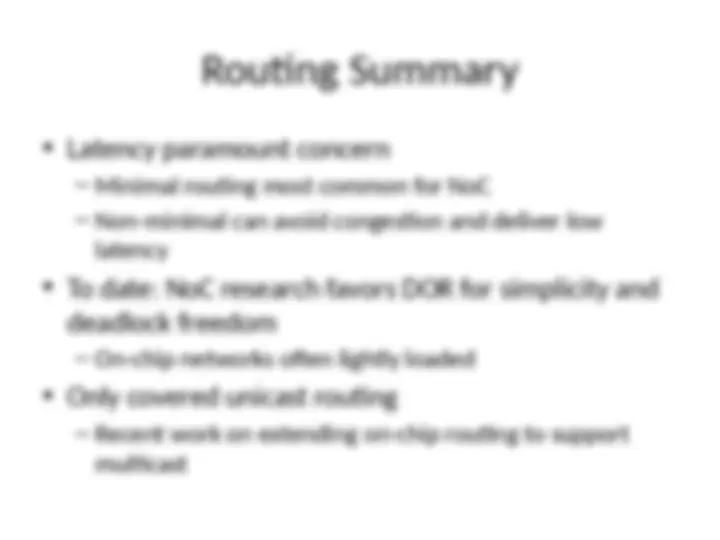Download lect09b-interconnects-topology-routing and more Slides Computer Networks in PDF only on Docsity!
Interconnection Networks:
Topology and Routing
Natalie EnrightJerger
Topology Overview
Definition: determines arrangement of
channels and nodes in network
Analogous to road map
Often first step in network design
Routing and flow control build on properties
of topology
Latency
Time for packet to traverse network
- Start: head arrives at input port
- End: tail departs output port
Latency = Head latency + serialization latency
- Serialization latency: time for packet with Length L to
cross channel with bandwidth b (L/b)
Hop Count: the number of links traversed between
source and destination
- Proxy for network latency
- Per hop latency with zero load
Impact of Topology on Latency
Impacts average minimum hop count
Impact average distance between routers
Bandwidth
Maximum channel load
Channel with largest fraction of traffic
Max throughput for network occurs when
channel saturates
Bottleneck channel
Bisection Bandwidth
Cuts partition all the nodes into two disjoint sets
Bisection
- A cut which divides all nodes into nearly half
- Channel bisection min. channel count over all
bisections
- Bisection bandwidth min. bandwidth over all bisections
With uniform traffic
- ½ of traffic cross bisection
Path Diversity
Multiple minimum length paths between source
and destination pair
Fault tolerance
Better load balancing in network
Routing algorithm should be able to exploit path
diversity
We’ll see shortly
- Butterfly has no path diversity
- Torus can exploit path diversity
Path Diversity (2)
Edge disjoint paths: no links in common
Node disjoint paths: no nodes in common
except source and destination
If j = minimum number of edge/node disjoint
paths between any source-destination pair
Network can tolerate j link/node failures
Direct & Indirect Networks
Direct: Every switch also network end point
Ex: Torus
Indirect: Not all switches are end points
Ex: Butterfly
Torus (1)
K-ary n-cube: k
n
network nodes
n-dimensional grid with k nodes in each
dimension
3-ary 2-mesh 3-ary 2-cube
2,3,4-ary 3-mesh
Torus (3)
Hop Count:
Degree = 2n, 2 channels per dimension
k odd
k
k
n
k even
nk
H
4
1
4
4
min
Channel Load for Torus
Even number of k-ary (n-1)-cubes in outer
dimension
Dividing these k-ary (n-1)-cubes gives a 2 sets of
k
n-
bidirectional channels or 4k
n-
½ Traffic from each node cross bisection
k
N
N k
channel load
Mesh has ½ the bisection bandwidth of torus
Implementation
Folding
Equalize path lengths
length
other links
0
0 1
1 2
2 3
3
0
0
1
1
2
2 3
3
Concentration
Don’t need 1:1 ratio of network nodes and
cores/memory
Ex: 4 cores concentrated to 1 router


